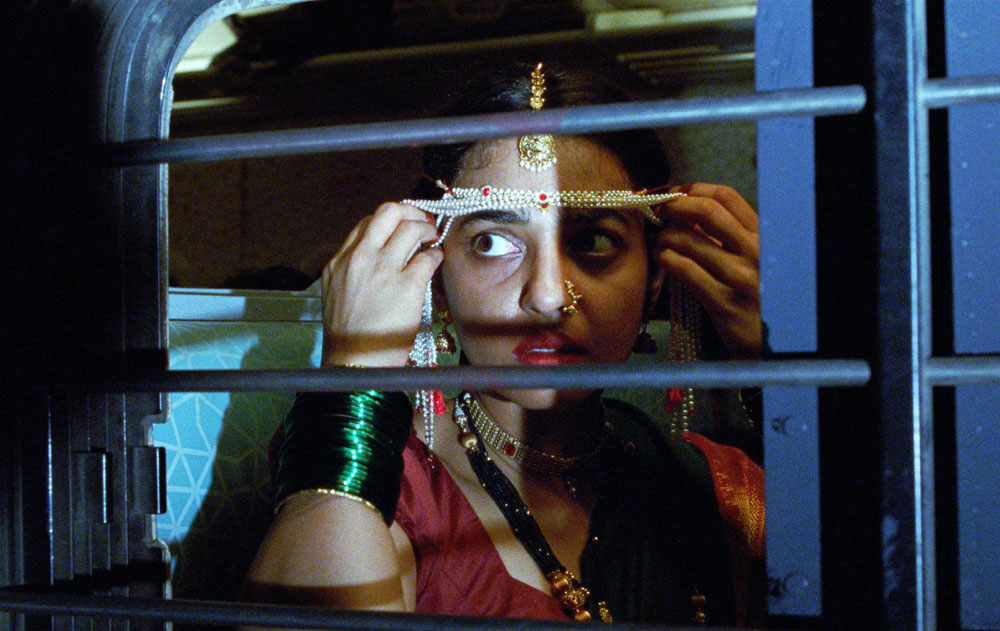One could describe the union of Uma (Radhika Apte) and Gopal (Ashok Pathak) a marriage of convenience in “Sister Midnight,” though it’s hard to see how anything was made easier by it. Perhaps the nuptials alleviated the growing pressure on each to find a partner when whispers about the quiet Gopal’s sexuality might’ve started to circulate when he wasn’t quick to take a bride and Uma was regarded as too wild to settle down with anyone in the small village they hailed from, but while the marriage certificate offered them an escape to the city where ideally they could disappear, they aren’t about to change for the benefit of one another. In the small tenement they share in a particularly poor part of Mumbai, there doesn’t seem to be the room to do otherwise, yet any metamorphosis for Uma appears as if it’s going to make things more uncomfortable than less in Karan Kandhari’s delicious, genre-defying feature debut.
While Kandhari was inspired in part by wondering what it was like to couple two people who had no idea what it was like to be adults, it’s a blessing that it appears as if the writer/director never lost his own inner child when “Sister Midnight” has the zippiness of a Looney Tunes cartoon with Apte’s irreverent Uma as its Bugs Bunny. Pulling faces left and right as an aggrieved newlywed, it becomes obvious she’ll have to take control of the situation when she has to insist to her husband, “This is the part where you ask me how my day was” to make any conversation at all after he comes home from a dull 9 to 5. She reluctantly takes the initiative to make dinner, starting out – where else? – by learning to cook rice with instruction from her tetchy neighbor, but that sense of responsibility leads to taking the late shift mopping floors, eventually becoming a creature of the night in more ways than one as she marches from one end of town to another.
Kandhari has worked in a variety of mediums and honors the fact that his passion for music is as much if not greater than for making movies, to go by “Sister Midnight”’s rocking multinational soundtrack and the fact that its title (and the name of the director’s next) is from an Iggy Pop song, ultimately delivering a film as rousing as show at CBGBs and just as unpredictable when such elements as stop-motion animals enter the mix. Around this time last year, the darkly comic character study was liable to blow the roof of theaters on the Croisette during its premiere at Cannes and now is coming for American audiences as it makes its way into theaters across the country this week. On the eve of its release, Kandhari generously took the time to talk about being inspired by his travels to Mumbai, finding a worthy partner in crime in Apte, who gives a knockout performance as Uma, and embracing physical expression to make the comedy and dramatic beats really sing.
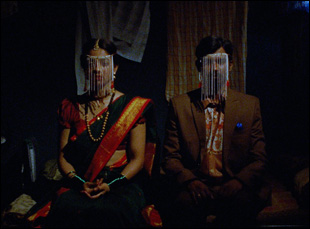
It’s a city with such a big personality and one of those great cities in the world with all sorts of life and chaos smashing into itself. It’s hard not to go there and be slightly teased by the place and become curious about it, so the city first sucked me in. It’s not where I’m from. It’s somewhere I visited and then continued to visit just because I was like curious and wanted to investigate it.
Did the geography of the city actually give shape to the narrative?
That was a big part of how we prepped the film because the city is like a tropical peninsula. When you go south, it’s this relic of the colonial era, slightly crumbly and covered in soot. And then you’ve got all these strange colonial buildings that are replications of Victoria Station in the UK, but in Bombay amongst palm trees. And then the further you go up north of the peninsula, it starts to get more rammed and that’s where the city started to grow out, so the geography helped [the structure of the story] because we always knew [Uma would] live in the inner city suburbs near Bandra and Khar and then would work in South Bombay, and it was important to show the city changing visually during her walks and how far she has to go to cross the peninsula and to give you a sense of the city that way and all its diversity.
The track housing that immediately surrounds Uma reflects so much in itself and you’ll do these wonderful takes strolling alongside her. What was it like to showcase that?
That was there from the first draft of the script because these settlements as they call them, or shacks that are sandwiched to the side of a curb have all these little worlds going on and that shot about her walking past and us following her was there from the beginning. You’re getting these very quick glimpses into all these different families of the women preparing chapatis and the men chowing them down later. And we actually built all the shacks that you see. We found a neighborhood that doubled for the one that it was based on in Bombay and still we shot it in Bombay, but the real street was was on a thoroughfare and we didn’t want to displace the communities, so we found a pretty good match. We then built the shacks and the shots at the end of the street to give hopefully a good depiction of the actual street that inspired me.
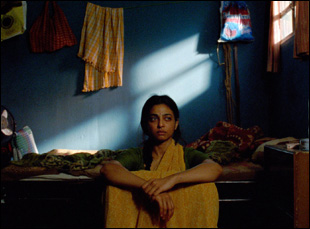
Thank God. I was so happy when she came along because I didn’t have to live with this person inside my head for that much longer. [laughs] But obviously, I was worried to start with when I was trying to cast it because I couldn’t find anyone. Then when I encountered her work, I was so sure she was the one and she exceeded my expectations. Once we built the shorthand and the trust between us, then it was like a sandbox for us to play in and it was like going to work with the best imaginary friend every day. I’m so proud of her performance and what she does in it.
What was it like seeing her engage with Ashok Pathak, who plays Gopal, for the first time? From what I understand, their temperaments aren’t too far off from the characters they play.
Yeah, perhaps I think so. Radhika is full of energy and quite straightforward and [Ashok] who plays Gopal is very sweet and a little bit anxious at times. I did rehearsals with them separately first, and then together and I think the first thing we did was improvise [a scene that’s] not in the film, but what is going on at the train station in the small town they’re coming from while they’re waiting for the train to take them to Bombay. That was quite cute and funny to see their awkward interactions and I think at times he was a bit intimidated by her, [which] only helped the performance. But they had a great chemistry together and both made the parts very human.
This likely shows my ignorance, but when you film as many scenes with direct address to the camera as you do, does that make you more of a scene partner to the actors than you’d otherwise be?
Funnily enough, yes, [Radhika] is always dead center in the frame and a lot of times I would be quite close to her or the other actors sitting beneath the lens with my monitor. So I was there, and she’s said in the past that’s weirded her out when directors do it, but somehow we trusted each other and she was fine with me being there.I like to be as close as possible because essentially the film is behavioral and there’s so much going on in the body language.
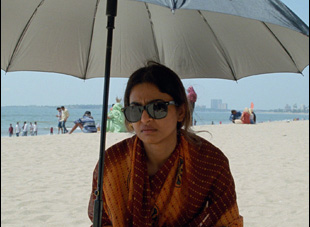
Sound is always exciting for me and I probably drive my sound team crazy. I’ve worked with them for a very long time. In a film where you’re not using dialogue to push the story across, the sound is really a storytelling tool and I hear sounds very vividly in my head when I’m writing and I get particular about things like footsteps because they radiate somebody’s psyche. So much of what you’re feeling echoes through your body. They’re not disconnected things, like right down to your posture how heavily your emotions are landing in your steps or not. So we spent a lot of time there to get the sounds right in certain scenes, so you could instantly tell what she was feeling, let’s say, from the footsteps, and the scene where it cuts to black and you hear them jumping in and out of bed. It’s quite a tense scene and those footsteps need to be very particular, just for you to be able to, without seeing, identify the difference between Uma and Gopal, and gauge the tension that they’re both holding inside themselves and the frustration in those footsteps. It’s a big, long process of sculpting and I enjoyed it very much.
Usually, I’ll ask about whether there was a particularly crazy day on set, but there’s a sequence where Uma is scrambling around a big public train station that you have to shoot from afar. What was it like to take on a big crowd scene like that?
We had a [railroad] track that was ours and we filmed it with our own extras and then when she popped out of the Churchgate station in South Bombay later on, we did a few different things there, because we shot from a rooftop of the rail authority, who happened to be opposite the station we wanted, so that was lucky. We’re on a rooftop and that’s mostly real people [in the frame], but about 40 of our extras mixed in a huddle that she enters, so we could covertly insert her into the madness. It was logistically a little crazy. At some point, somebody walked into the frame and asked her for a selfie because they recognized her. [laughs]
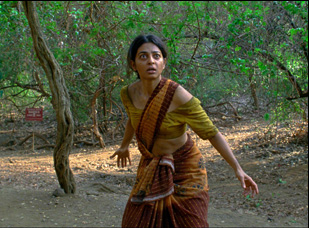
Yeah, there’s a scene where Gopal is is sitting at this really simple bus stop at the beach after their botched little day trip to the ocean and Uma walks off in a huff and he remains there. The bus was supposed to back into the shot, but the bus accidentally kept going and rammed into the bus stop sign and I just started howling on set. I was like, “Don’t lose that!” And we kept that in because Gopal’s reaction was so amazing to it. That just gave me one extra gag I didn’t ask for, but I was happy to take.
When you come from a multidisciplinary background, is a feature like this satisfying where you’re able to bring all these different elements together?
Yeah, it’s always been the goal. I’m an artist who works at different mediums, but film has always been my main medium and it’s a miracle we got the film made. I just hope I can keep making more, and it’s been great. Beyond awards or reviews, the best thing is actually seeing it embraced by people on the ground that I’ve met while on the road because I’ve been around the world with this thing. It’s a weird little film, and it’s in Hindi, and it’s just been really lovely to see it embraced by weirdos across the world.
“Sister Midnight” opens on May 16th across the country, including in New York at the Angelika Film Center and AMC Empire 25 and Los Angeles at the Landmark Nuart, the Laemmle Glendale and the Alamo Drafthouse DTLA. A full list of theaters is here.




